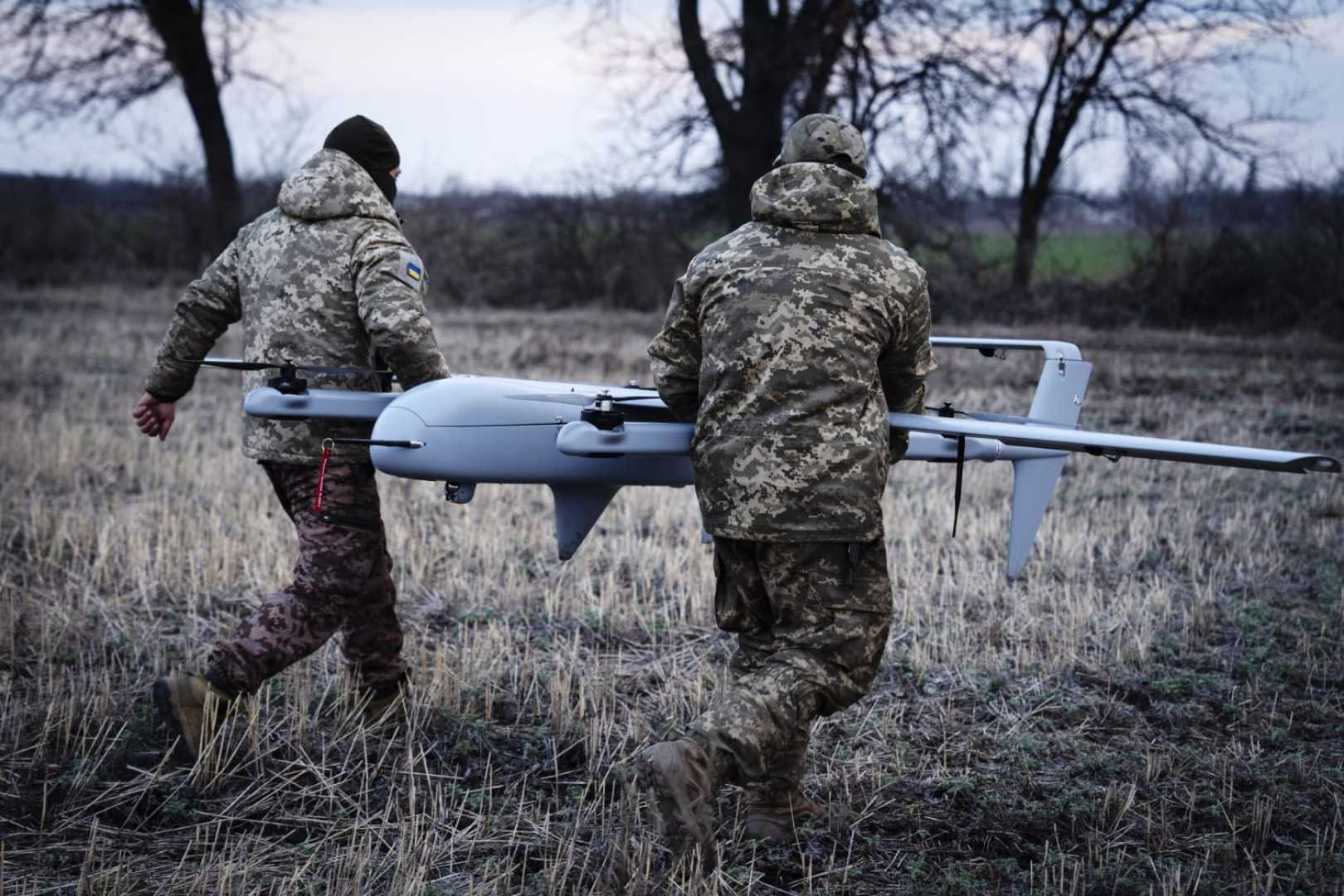News
Ukrainian Soldiers Use Drones for Survival Amid War’s Chaos

VOLNOVAKHA, Ukraine — On January 21, a day after Donald Trump’s inauguration, a reconnaissance mission unfolds on the embattled border of the Volnovakha region of Donetsk, Eastern Ukraine. Soldiers from a Ukrainian Army drone unit are deployed, using cutting-edge technology to navigate the threats looming above them.
Their green van halts under a cover of branches, shielding them from enemy drones soaring overhead. Unit navigator Yevhen begins unloading a V-shaped drone, meticulously preparing it for operation while pilot Dmytro sets up computers in the back. Technician Serhiy focuses on erecting green antennas, seemingly unfazed by the distant sounds of automatic fire resonating through the air.
As the team gears up, the atmosphere shifts from tension to camaraderie, discussing politics amidst the dire backdrop of war. Earlier that day, Yevhen had joked about Trump’s promise to end the conflict in a day, an assertion they all find laughable in their dangerous reality.
Following minute calculations, Serhiy prepares to launch the drone using a slingshot mechanism. With tension building, Yevhen counts down: “Three, two, one, launch!” The drone ascends, giving Dmytro real-time tactical images as he navigates its path at Yevhen’s directions.
“Go higher. Ten degrees left. Five degrees right,” Yevhen instructs as they conduct the reconnaissance mission. This vital exercise can last hours, providing intel on enemy positions amid chaotic battlegrounds.
But shortly after take-off, the drone’s video stream falters due to low clouds, prompting a quick withdrawal. “Recall it,” Yevhen commands. Once the drone returns, they regroup for a collaboration with adjacent units focusing on kamikaze winged drones, vital for high-stakes missions.
“FPV! I see it!” a soldier suddenly exclaims, pointing skyward. An enemy drone, identifiable by its X-shaped silhouette, circles ominously above. The team instinctively crouches, hearts racing while listening to the buzzing noise that fluctuates as the enemy drone nears.
Crouched under trees, Yevhen reflects on his extensive experience. “It’s better to move slow and not to run. The pilot sees you less when you remain still.” His voice holds steady, underscoring the seriousness of their situation.
After several long minutes filled with tension, the enemy drone finally departs, detonating in the distance. The unit resumes their mission, now shifting focus to their kamikaze drone equipped with larger explosives. Just days before, they had pinpointed a hidden enemy artillery gun during another reconnaissance exercise.
With their new target in sight, the kamikaze drone launches, guided by their earlier intel. Following the flight path, the drone hurtles toward the artillery position obscured by camouflage. But just before impact, the video feed suddenly cuts out. “I think it was a miss,” Yevhen assesses, disappointment evident in his tone.
As shadows stretch across the battlefield, the team discusses perseverance. “Better to try again tomorrow,” Yevhen concludes, aware that war presents endless cycles of trial and error.
As night descends, the soldiers head back to their billet—a cozy brick home invitingly warmed by their hosts, Oleksandr and Natalia. The couple opens their home to the soldiers at no cost, understanding the gravity of the situation as their own son fights at the front lines.
The warmth of the kitchen contrasts sharply with the harsh realities outside. Conversations flow as the soldiers share meals, but the day’s work isn’t complete. They must upload drone footage and prepare for the next day’s assignments, staying vigilant as enemy drones buzz nearby.
As the evening wears on, Yevhen is reminded of his former life as an actor pre-war. “Once this is all over, I’d like to act again,” he reflects, though notes the emotional scars the war has left. “My country needs a defender now, not an actor.”
The following morning starts with urgency as the van navigates terrain filled with makeshift defenses. Today, they will launch a drone loaded with explosives, significantly altering their launch protocol due to the risks involved.
“We’ll recycle what they sent,” Yevhen quips, revealing humor amidst the tension. The drone is powered up, ready to launch when an alert goes off—a warning of incoming glide bombs.
The soldiers rush for refuge as the bombs drop nearby, their explosive detonation erupting in violent bursts. They quickly check on their equipment, returning to methodical precision as they prepare for the drone launch once more.
“Three, two, one—launch,” Yevhen commands. The drone ascends safely, intent on finding its target beneath the layers of warfare devastation. As the target becomes visible, anticipation fills the air. With a straightforward statement, Yevhen asserts, “We will hit the target.”
But such optimism is met with a pragmatic response from Serhiy, “We will see what happens.” Laughter breaks the tension among them as they await the outcome of their painstaking preparation.
As the camera feed reveals the impact, an orange fireball erupts on screen. The men barely flinch; they’re stoically acquainted with the long hours spent in careful planning, readying for yet another cycle of excellence amidst adversity.
The operations continue as they mentally prepare for another demanding day ahead. The relentless nature of war hangs heavy, but their mission is clear—the next drone flight awaits, and the inevitable uncertainty of survival stands resolute.












